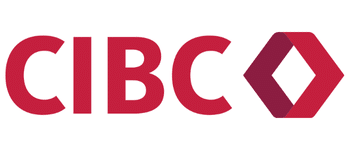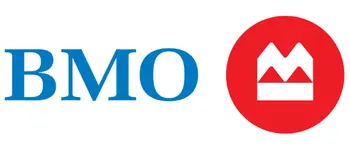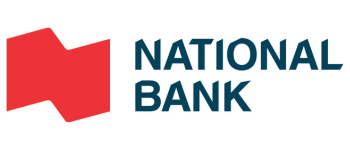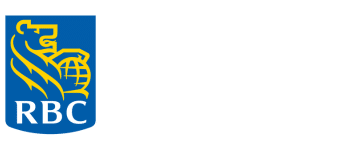Canadian Bank Stocks Are Built for Steady, Long-Term Growth and Returns
Key takeaways
Stable Dividends and Strong Regulation: Canadian banks, such as RBC, TD, and BMO, are globally recognized for their reliable dividends and resilience, thanks to a well-regulated financial system that minimizes risk.
Growth Beyond Borders: Many Canadian banks, like TD and BMO, are expanding into the U.S. and other international markets, offering diversification and new growth opportunities for investors.
Sector Resilience and Innovation: Despite economic challenges, Canadian banks remain stable, with growing investments in digital banking and wealth management positioning them for long-term success.
3 stocks I like better than the ones on this list.Whether you’re a seasoned investor or just starting out with buying stocks in Canada, there’s one thing most Canadians agree on when building their portfolios: they almost always include Canadian bank stocks.
Canadian Banks operate in an industry that is heavily regulated and protected from competition. Donald Trump has even expressed his frustration that Canadian Banks are allowed to operate in the United States, but US Banks cannot operate in Canada. This is the exact type of regulation I am speaking about.
Although there are no doubt challenges in the Canadian economy at this point in time, most of these banks are geographically diverse enough, particularly the Big 5, that they should be able to offset struggles in the Canadian economy with international operations.
On the flip side, Canadians remain extremely resilient, and provisions for credit losses seem to be normalizing.
So, what banks are set up best today? I’ll go over that in this article on the best stocks to buy in Canada.
What are the best Canadian bank stocks to own today?
Canada’s leading digital-only bank
Equitable Bank (TSE:EQB)

Equitable Bank, often branded as EQ Bank, operates as Canada’s largest digital-only bank. It offers high-interest savings accounts, mortgages, and other financial products without the overhead of a traditional branch network. Known for its innovation, EQ Bank provides tech-driven financial solutions, appealing to cost-conscious and digitally-savvy customers.
P/E: 9.5
5 Yr Revenue Growth: 20.4%
5 Yr Earnings Growth: 11.1%
5 Yr Dividend Growth: 22.0%
Yield: 2.0%
Major Canadian bank with strong retail focus
Canadian Imperial Bank of Commerce (TSE:CM)

CIBC provides a broad range of financial services, including personal and business banking, wealth management, and capital markets. Known for its strong retail banking operations in Canada, CIBC also has a growing U.S. presence. The bank’s focus on mortgages and consumer lending makes it a leader in Canadian home financing, while its robust dividend history appeals to income-focused investors.
P/E: 10.4
5 Yr Revenue Growth: 6.7%
5 Yr Earnings Growth: 5.4%
5 Yr Dividend Growth: 5.2%
Yield: 4.7%
Diversified bank with strong U.S. footprint
Bank of Montreal (TSE:BMO)

Bank of Montreal is one of Canada’s largest and oldest banks, offering personal and commercial banking, wealth management, and capital markets services. BMO is notable for its significant presence in the U.S., particularly in the Midwest, providing a strong growth avenue outside Canada. The bank is also a consistent dividend payer, with one of the longest dividend-paying streaks in Canada.
P/E: 12.4
5 Yr Revenue Growth: 4.3%
5 Yr Earnings Growth: 1.4%
5 Yr Dividend Growth: 8.0%
Yield: 4.7%
Canada’s 2nd largest bank by total assets
Toronto Dominion Bank (TSE:TD)

TD Bank operates a wide range of financial services, including retail and commercial banking, wealth management, and insurance. It has a strong presence in the U.S., where it operates as one of the top 10 banks, making TD the most U.S.-exposed Canadian bank. TD’s focus on retail banking and customer service, along with its robust balance sheet, ensures consistent performance.
P/E: 17.7
5 Yr Revenue Growth: 6.2%
5 Yr Earnings Growth: -5.9%
5 Yr Dividend Growth: 6.6%
Yield: 4.9%
Leading regional bank with a focus on Quebec
National Bank (TSE:NA)

National Bank is one of Canada’s smaller major banks, but it has a dominant position in Quebec, offering a full range of financial services. The bank also has a growing presence in wealth management and capital markets. National Bank is known for its strong operational efficiency and focus on digital banking, which helps it punch above its weight in profitability.
P/E: 11.0
5 Yr Revenue Growth: 9.3%
5 Yr Earnings Growth: 11.0%
5 Yr Dividend Growth: 10.2%
Yield: 3.7%
Canada’s largest bank by market capitalization
The Royal Bank of Canada (TSX:RY)

Royal Bank of Canada (RBC) is Canada’s largest bank, offering a full suite of financial services, including personal and commercial banking, wealth management, insurance, and investment banking. With a presence in over 30 countries, RBC is a global banking leader, recognized for its consistent profitability and strong dividend growth.
P/E: 12.6
5 Yr Revenue Growth: 4.2%
5 Yr Earnings Growth: 4.7%
5 Yr Dividend Growth: 6.1%
Yield: 3.7%
Are Canadian banks a good buy now?
Historically there hasn’t really been a “poor” time to buy into these blue-chip big banks or add to your position. Canadian investors witnessed the banks go through a significant bull run in late 2021, primarily because of the rumours of rising interest rates.
We then witnessed them go through one of the harsher drawdowns since the financial crisis as provisions for credit losses spiked, earnings fell, and more uncertainty loomed. So, I guess you could say that near the top in 2021 was a “poor” time to buy them over the short-term, but their rebound in 2024 quickly washed most of the fears away.
Having these stocks in your portfolio has historically provided large-scale benefits. And although nothing is guaranteed in the future, it is a safe bet these institutions will continue to increase profitability.
How safe are Canadian bank stocks?
The highly regulated Canadian banking market creates massive barriers to entry. This is similar to the Canadian telecom sector.
Most importantly, all 6 Big Banks have diversified product bases, including global banking, global wealth management, small business banking, personal banking, consumer and commercial lending, capital markets, and much more. Not only is their client base focused on Canadian consumers, but institutional clients also.
The Big 5 are incredibly important to the economy in Canada, as are some of the smaller regional players, such as the National Bank of Canada (NA) and Canadian Western Bank (CWB). They deal with wealth management for clients, investment banking, mortgages, personal banking, car loans, and so much more. They are vital to a healthy economy.
A Canadian bank stock can be a cornerstone of one’s portfolio, is low-risk, and provides growth and a steady income to increase your net worth over time.
After weathering the financial crisis better than most all world banks, the banks in Canada were also among the first to reinstate a rising dividend during the COVID-19 pandemic. In fact, the Bank of Montreal has one of the longest consecutive dividend payment streaks in the country, paying dividends since the early 1800s.
Is there an ETF for Canadian bank stocks?
There are a wide variety of ETFs for Canadian bank stocks. If you’re looking for a traditional ETF that holds the Big 6 banks, look at the BMO Equal Weight Banks ETF (ZEB.TO) or Hamilton’s Equal Weight Banking ETF (HEB.TO)
However, if you want an ETF that can provide you with a bit more yield, look to Canadian bank ETFs like BMO Covered Call Canadian Banks ETF (ZWB.TO) or even Canadian Banc Corp (BK.TO).
Which Canadian bank stock pays the highest dividend?
At this point in time, Scotiabank is the highest yielding Canadian bank stock. This title used to be routinely held by Canadian Imperial Bank of Commerce, however due to some significant struggles by Bank of Nova Scotia over the years its price has fallen to the point where it is the highest yielding bank stock.
It is also important to note that TD Bank’s drawdown over the years due to anti-money laundering issues is also resulting in its yield being much higher than historical averages.


